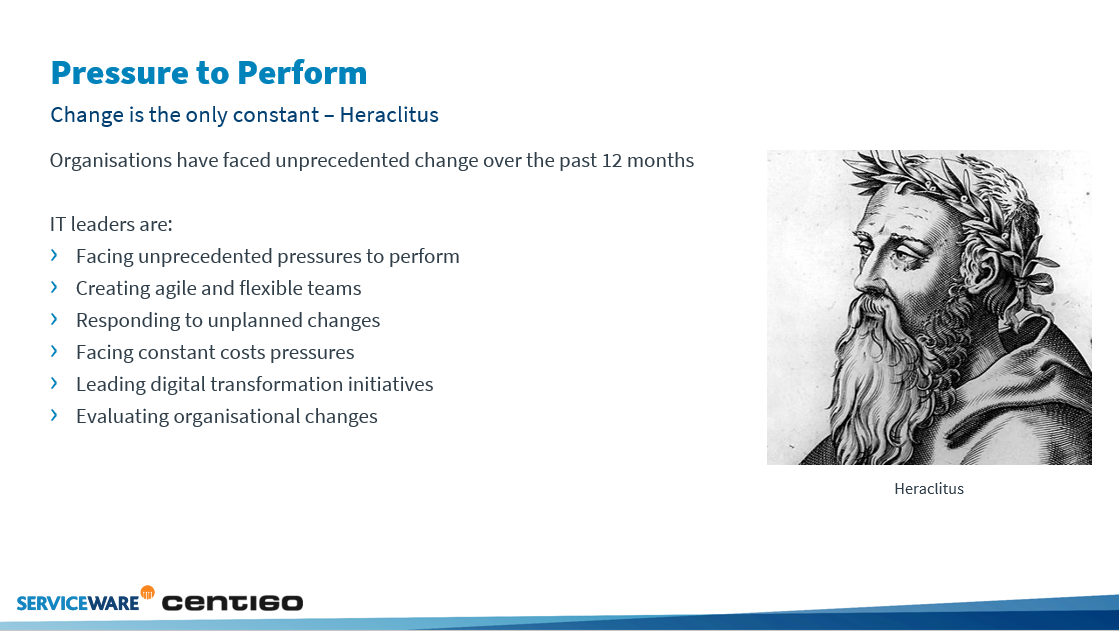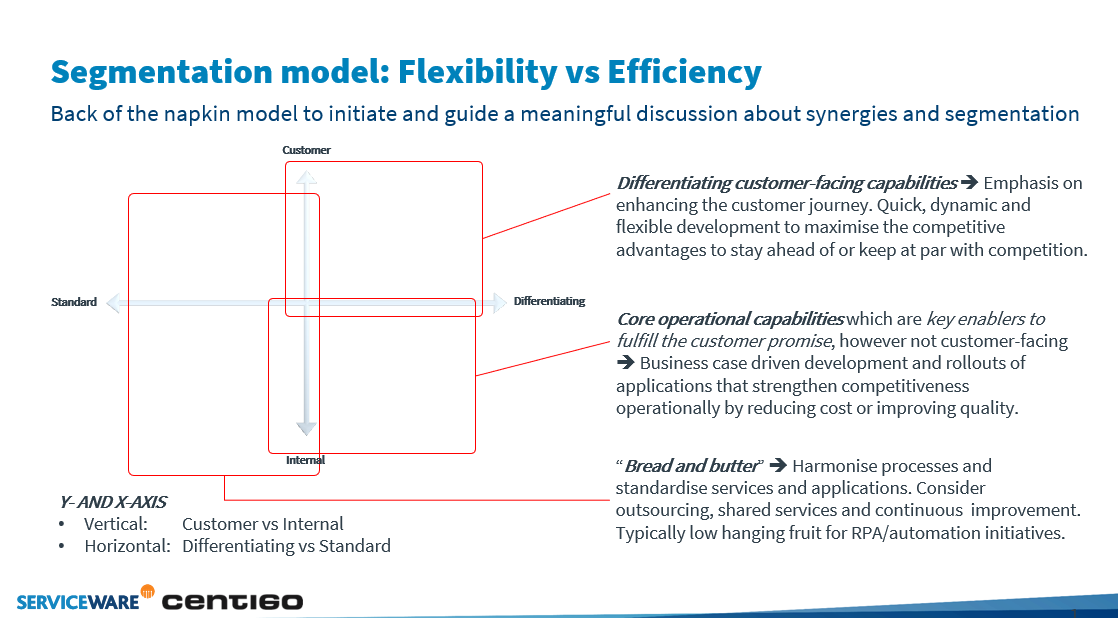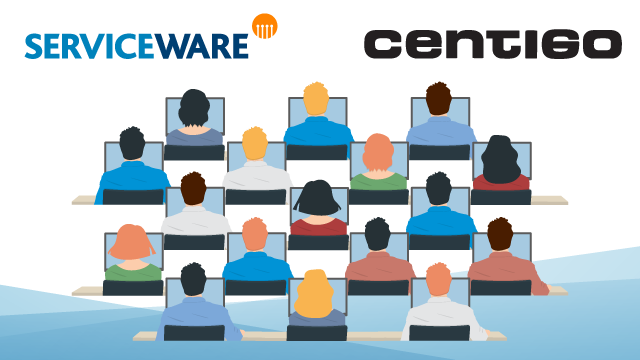IT leaders are currently facing unprecedented pressure to excel and meet the demands of their businesses. The question arises: which organizational structure, centralized or decentralized, holds the key to helping CIOs effectively manage and navigate these ever-changing pressures? Alternatively, could a hybrid approach be the optimal solution?
In these unprecedented times, the only constant is change, especially for organizations that provide IT business services. CIOs face the challenge of delivering uninterrupted services to ensure the resilience and continuity of their businesses. However, this task is not always simple, as evidenced by the outage once experienced by Google's Cloud Platform, which affected popular services like Gmail, YouTube, and Snapchat. Furthermore, more recently, Slack also encountered problems. As demands continue to shift, the need for agile and flexible teams becomes increasingly apparent. It is crucial to have the right skills in the right place at the right time to ensure smooth operations and successful implementation of strategic initiatives.
In today's rapidly changing world, the ability to adapt to unforeseen circumstances is crucial. The global pandemic has already brought significant changes to our lives and will continue to do so in the future. IT leaders must be prepared to respond quickly and effectively to both expected and unexpected changes. Moreover, with the economy facing challenges, CIOs are under pressure to cut costs and achieve more with limited resources.
Organizations are recognizing the critical importance of digital transformation for their survival. As the nature of business continues to change, IT and business leaders are evaluating their organizational structures to determine if they are aligned with and driving the goals and strategies of the enterprise. Is the current setup effectively supporting and accelerating progress, or is a transformation necessary to thrive in the future?
CIOs often find themselves caught in the eternal struggle between centralization and decentralization. To tackle this issue head-on, they must first ask themselves a crucial question: Does the organizational structure truly play a significant role in achieving the CIO's objectives?
Objectives of CIOs
- Ensuring seamless operations and delivering high-quality services while optimizing costs
- Advancing the strategic objectives of the organization to drive tangible business benefits
CIOs must explore every avenue to ensure the achievement of these two objectives; however, before making any decisions, IT leaders must possess essential knowledge:
- What are the financial requirements for transforming the organizational structure?
- What are the financial implications of the new organizational structure?
- What potential efficiencies can be achieved without compromising the quality of service for end users?
- Can the organization achieve greater agility, enabling it to quickly adapt to evolving business demands and drive value creation?
The road to value in today’s business context
The globalization of business and the rapid pace of digitalization have been key driving forces behind the need for changes in organizational structure. The ongoing pandemic has further accelerated this transformation, leading to the emergence of new behaviors and ways of working and living.
In order to thrive in this dynamic environment, companies must embrace adaptation. One prominent trend we've observed is organizations striving to enhance their agility and responsiveness to market changes. This entails a shift in decision-making, bringing it closer to the source of value creation. Whether it's in customer interactions or product development, the decentralization of decision-making empowers business units, local sales teams, and product divisions to operate with greater autonomy. As a result, corporate functions that previously held responsibility across the entire organization, including IT services, are being dismantled.

Aligned with this trend, we are witnessing the rise of a new generation of companies that have embraced an agile mindset from their inception. These forward-thinking organizations are known for their innovation and their ability to outshine established competitors in terms of growth. What sets them apart is their commitment to distributed decision-making, which allows them to stay intimately connected with their customers' needs and preferences.
So, what does this mean for the IT function and for all of you in leadership roles such as CIOs, IT directors, and heads of business systems? Many of you have likely noticed a rise in Shadow IT, which refers to the spending on IT that is not included in the official IT budget. Additionally, many of you have been tasked with reducing the size of the Group IT function and instead working with smaller, more decentralized IT teams or liaisons. Some of you are already seen as pioneers in adopting agile practices, and you recognize the potential to help the rest of the organization become more agile. However, you also understand the delicate balance between stability and flexibility that needs to be maintained.
When it comes to the overall mission of a company's IT function, which is to effectively serve the business and its customers with various digital capabilities and services, the question arises: how can the optimal operating model be designed and implemented? The answer to this question depends on how the business as a whole operates. Leading a centralized IT function is significantly different from leading a decentralized function, especially in terms of the key focus areas.
As is often the case, the ideal approach lies somewhere in between, blending the best aspects of both extremes. There are various ways to illustrate and define this, such as through federated and hybrid models. The key is to find synergies and leverage the strengths of both approaches. Some may refer to this as a pragmatic solution, but it's crucial to establish a structured approach to avoid confusion and prevent a complete lack of control and flexibility – essentially, the worst of both worlds.
What model to choose and why?

This model provides a framework for determining whether a centralized or decentralized approach should be applied to different areas of IT services. It recognizes that areas requiring flexibility and speed, particularly those close to the customer and those that truly differentiate the business, are well-suited for decentralization or closer integration between the business and IT. On the other hand, stable business functions that are not directly involved in differentiation or the customer experience can be effectively managed with a focus on efficiency and control.
How to make your decision and next steps
Centigo and Serviceware take into account the unique circumstances of each client and employ a systematic approach that results in a recommended new IT operating model and a comprehensive cost and value model, essentially creating a new IT budget. This encompasses not only the ongoing costs, but also the necessary investments to transition from the current state to the new model in incremental steps or sprints. The timeline for implementing this approach is largely influenced by factors such as the size of the business, organizational complexity, geographic distribution, and trading priorities. Based on past experience, the delivery of this approach typically ranges from 4 to 12 weeks.
Key factors for success to keep in mind:
1. Foster close relationships with your internal customers and gain a deep understanding of their customers' needs.
2. Implement a service-oriented structure to effectively meet those needs.
3. Be prepared to accurately track and openly present costs, while also recognizing the business value provided by IT services.
4. Vigorously protect fundamental aspects like security and data integrity.
In today's business landscape, enterprise organizations face immense pressure to cut costs while simultaneously adapting to the ever-changing needs of the digital age. IT leaders play a crucial role in assessing the performance of technology, ensuring it aligns with business objectives and evaluating its cost-effectiveness. Moreover, IT leaders must drive efficiency to generate cost savings that can potentially save jobs and provide opportunities for reinvestment in business growth and support.
These challenges can be overwhelming for any IT leadership team. However, what if we consider the possibility that transforming the way IT operates could actually help address these challenges?
Serviceware offers a solution to the age-old dilemma of whether to centralize or decentralize IT operations. By utilizing the software's 'what-if' capabilities, organizations can establish a baseline of their current state. They can then create cost models that replicate potential centralized or decentralized IT structures. This enables IT leaders to compare the running costs of different scenarios, ranging from a fully centralized or decentralized organization to a hybrid model.
Moreover, it is important to consider the financial implications of transforming IT and include them in the assessment. Serviceware offers valuable support in this regard, helping organizations determine the comprehensive cost of the transformation initiative. Additionally, if the decision is made to proceed with the project, Serviceware Financial enables status reporting and financial management, empowering IT to track project costs, monitor project status, and ultimately showcase the impact of their decision by illustrating the changes in operational costs.
To explore how this has successfully worked with our clients and to request a demonstration, please don't hesitate to reach out.
About the authors:
Sanjiv Sachdev, Director, Strategic Value Consulting at Serviceware is an accountant with over 25 years experience. He has worked for VMware and ServiceNow as well and as a consultant with various large organisations including BP, Centrica, and NMBS – the Belgian Railway. He is an expert in managing IT processes including both cost management, and, cost transparency to achieve cost optimization.
Ragnar Agnell is the Founder and Director of Centigo UK. He has held many executive and senior management positions at firms such as Adcore Telecom, IBM Business Innovation Services and Accenture. Ragnar’s area of expertise is to help organisations maximise the value of IT and digital capabilities, and to organise and lead change programmes with this objective.

 German
German

